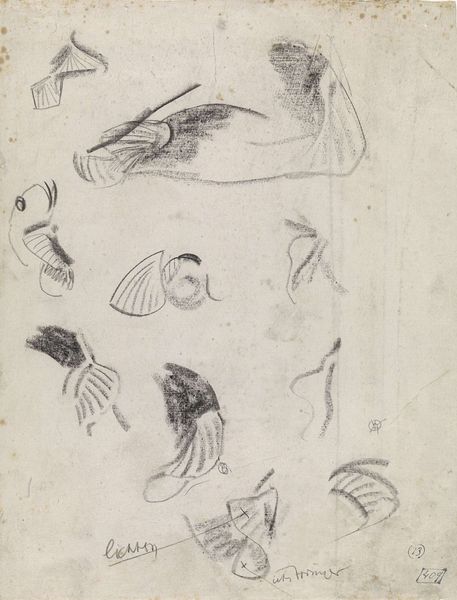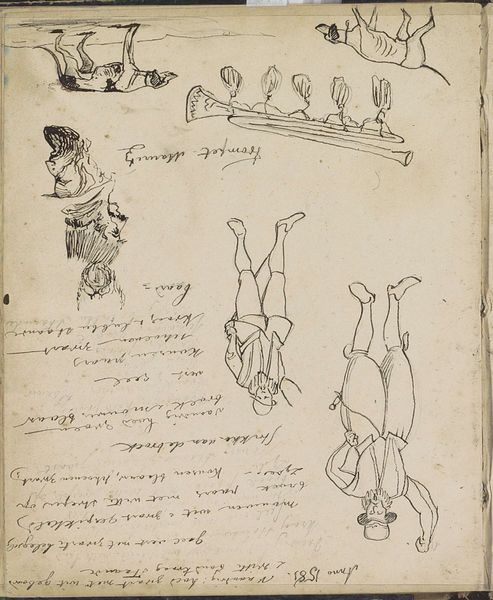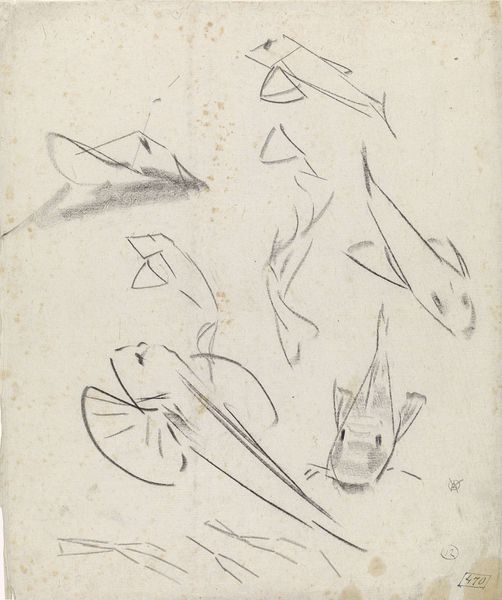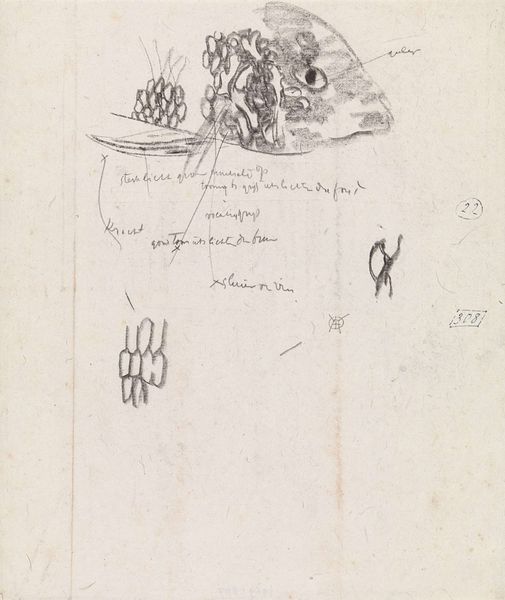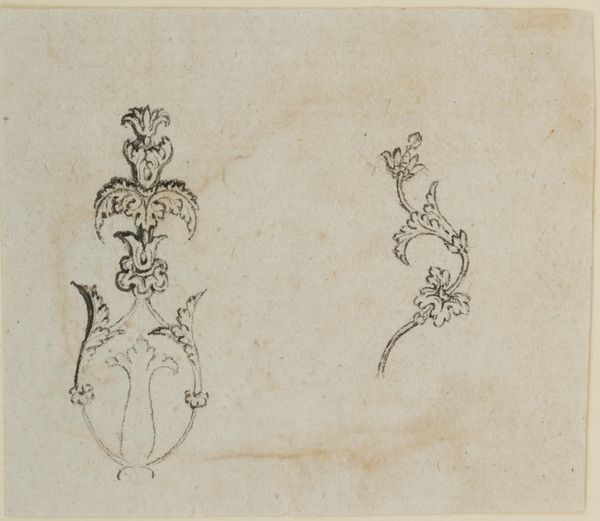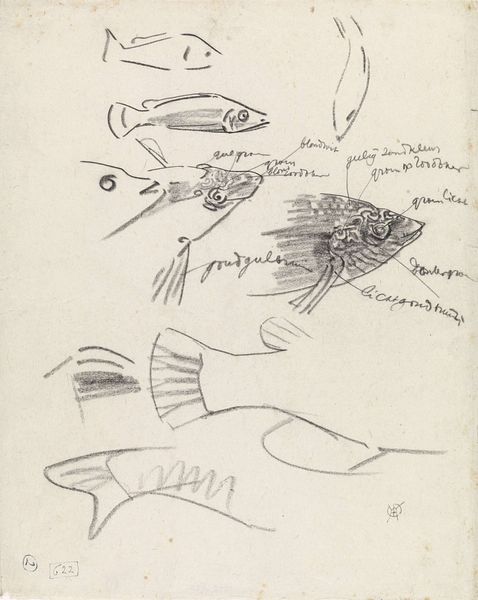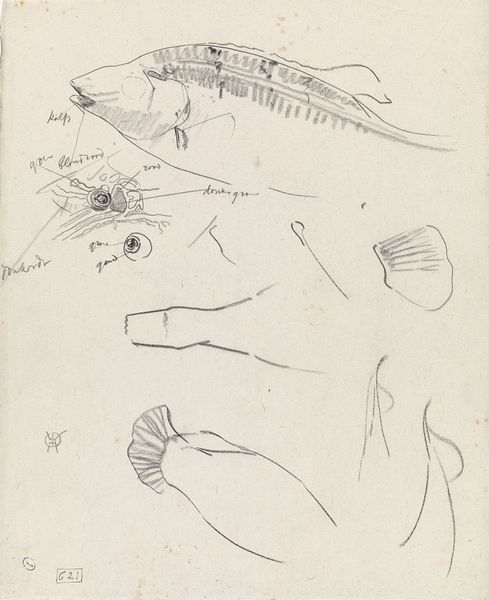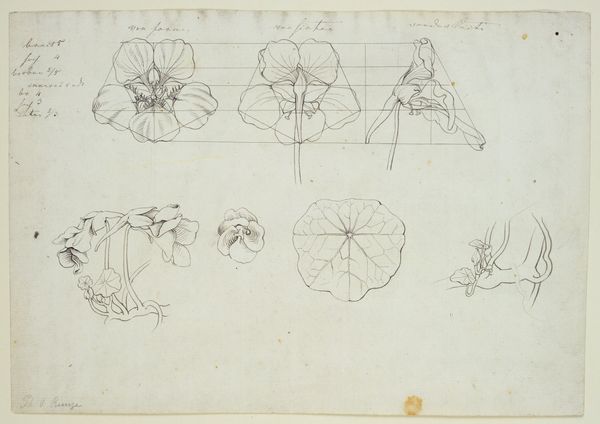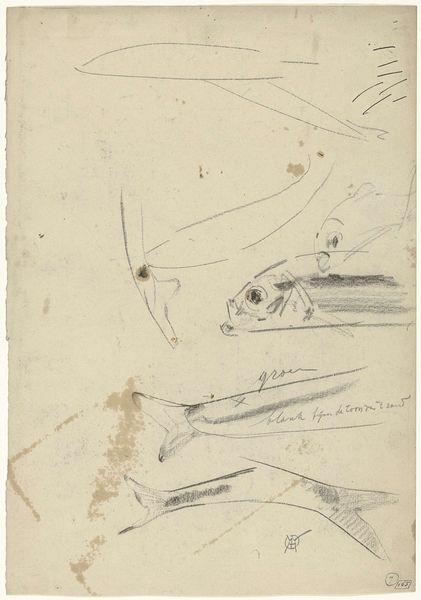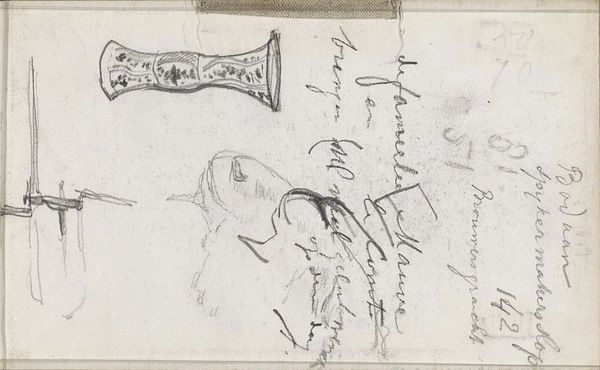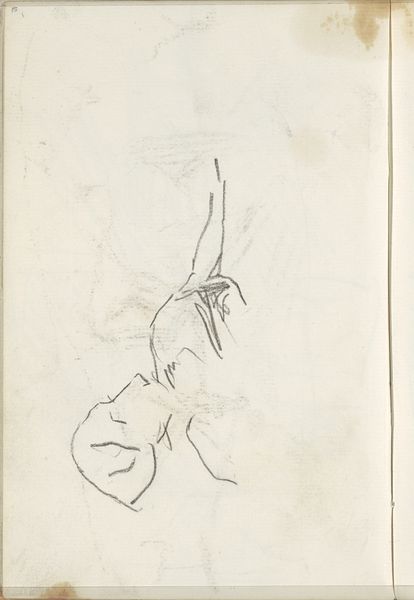
drawing, print, paper, ink, graphite, pen
#
drawing
# print
#
pen sketch
#
landscape
#
paper
#
ink
#
graphite
#
pen
#
academic-art
#
realism
Dimensions: 121 × 120 mm
Copyright: Public Domain
Editor: So, here we have John Ruskin's "Salvia Silvarum," drawn in 1881. It's a pen, ink, and graphite drawing on paper, a botanical study, I guess. It feels quite scientific and yet, at the same time, strangely whimsical. What do you make of it? Curator: Whimsical, yes! Like a dream pressed flat onto paper. Ruskin, you know, wasn’t just trying to record the salvia, he was trying to understand its very soul. I like to imagine him, in his later years, hunched over this drawing, muttering to himself, perhaps about the fleeting nature of beauty. The precision of line suggests a reverence for the natural world, don't you think? Editor: Absolutely. There's almost an architectural quality to how he’s broken it down, labelled each part. Was this typical for him? Curator: It was. He used art for documentation, for sure, but mostly as a means to deeply feel. He wanted us to truly *see* the world, not just glance at it. Think of the sage here, for instance: doesn’t that central form resemble the fluted column of some forgotten temple? Perhaps a temple to nature itself! Editor: I see what you mean. It is much more expressive and subjective than purely botanical illustration. I initially focused on its formal aspects, but understanding Ruskin's philosophy helps me appreciate the drawing on a much deeper level. Curator: Precisely! And next time you're faced with a sage plant, take a moment. Don't just see the green; try to sense its Ruskin-esque soul. Maybe you'll see a ruined temple, too.
Comments
No comments
Be the first to comment and join the conversation on the ultimate creative platform.


